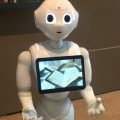ICYMI: Highlights from the week that was July 15 – July 21, 2018
No one can keep up with everything, so let us do it for you. We’ll gather the top Smithsonian stories from across the country and around the world each week so you’ll never be at a loss for conversation around the water cooler.
Make no bones about it–it was a newsy week for the skeleton set.

The Hunt for ‘Planet Nine’ Discovers 12 New Moons Around Jupiter
Astronomers believe some of the new moons are the ‘last building nlocks of the solar system’ that never got swept up in forming planets
The Wall Street Journal, July 17
Astronomers searching for a planet beyond Pluto discovered instead a dozen new moons orbiting Jupiter. That swells to 79 or so the number found circling the giant planet since Galileo spotted the first of them with a homemade telescope more than 400 years ago.
The finds were announced Tuesday in a bulletin from the International Astronomical Union’s Minor Planet Center at the Smithsonian Astrophysical Observatory in Cambridge, Mass., which serves as the global clearinghouse for the study of moons, asteroids and comets. Read more from Robert Lee Hortz for The Wall Street Journal: The Hunt for Planet Nine Discovers 12 New Moons Around Jupiter – WSJ
The battered aspirations of the American working class (Opinion)
The Washington Post, July 16

“Lathe operator machining parts for transport planes at the Consolidated Aircraft Corporation plant, Fort Worth, Texas,” (1942) by Howard R. Hollem. (Library of Congress)
Maybe there never will be any rest for them. Even in an exhibit at the National Portrait Gallery in Washington titled “The Sweat of Their Face: Portraying American Workers,” laborers of every kind — slaves and free people, clockmakers and Subway sandwich workers, sharecroppers and machinists — are frozen in artworks depicting their lives, landscapes and interior worlds. These are not portraits of workers at leisure or with tasks completed; these are portraits of workers at work, with all of the intensity and stress of the labor that powers American industry exposed. Read more from Elizabeth Bruenig for The Washington Post.
The value of Trevor Paglen’s art may remain a secret (Review)
The Washington Post, July 13
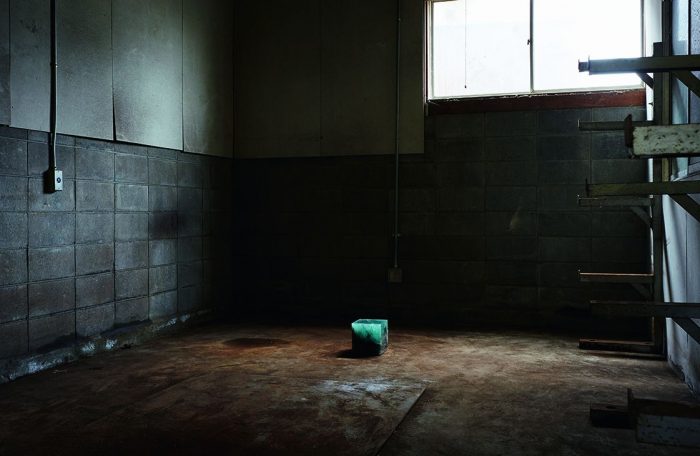
Trevor Paglen, “Trinity Cube,” 2016, irradiated glass from the Fukushima Exclusion Zone and Trinitite. Installation view at Fukushima Exclusion Zone, 2016. (Kenji Morita/Trevor Paglen, Metro Pictures)
Trevor Paglen is so hot right now. His work, which is about surveillance, secrecy, data collection and artificial intelligence, is everywhere — including in space. In 2012, with help from scientists at the Massachusetts Institute of Technology, he launched a disc micro-etched with 100 images into geostationary orbit, where it will remain for billions of years. Meanwhile, interviews with the artist haunt the Internet and the art press. Paglen won a $625,000 MacArthur Foundation “genius” grant last year.
I have asked myself why, since seeing his massive retrospective at the Smithsonian American Art Museum, my mind keeps sliding off it, like water off wax. The answer came to me when I tried to imagine seeing the same body of work assembled 20 years hence. I tried — but failed. I could only see it secreted away in storage. Read more from Sebastian Smee for The Washington Post.
Expedition Hopes to Solve Mystery of ‘Last American Slave Ship’
The owner of the Clotilda smuggled African captives into Alabama in July 1860, then set the vessel ablaze to destroy the evidence.
National Geographic, July 16
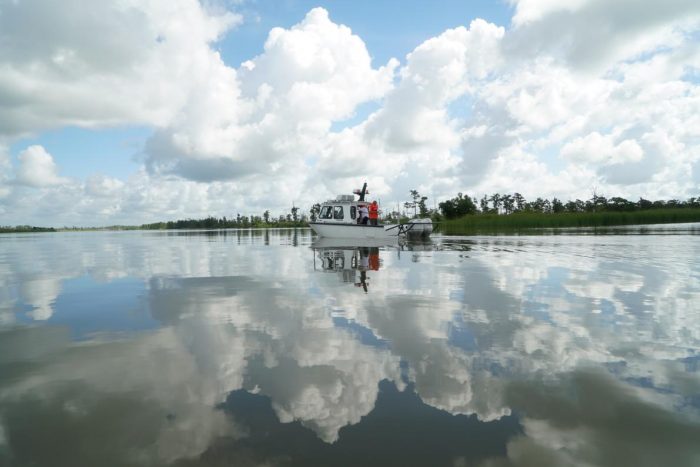
Archaeologists search a branch of the Mobile River for the sunken remains of the Clotilda, the last vessel to bring enslaved Africans to America. (Photo by Asha Stuart / National Geographic)
It was one of the greatest unsolved crimes of the 19th century. Now a team of archaeologists is hunting for the smoking gun—the charred wreck of the Clotilda, the last slave ship to reach the United States before the outbreak of the Civil War.
Experts from the National Geographic Society have joined marine archaeologists and divers from Search, Inc., and the Slave Wrecks Project of the Smithsonian’s National Museum of African American History and Culture in an intensive survey of a muddy branch of the Mobile River where the vessel is thought to lie.
The Alabama Historical Commission (AHC) sponsored the expedition after a local reporter found what was thought to be the wreck earlier this year, focusing national attention on the vessel. Though it turned out to be another ship, it brought to the surface an important, if painful, era in the state’s and nation’s past. Read more from Joel K. Bourne for National Geographic.
Mary Sue Milliken and Susan Feniger are the first women to win the Julia Child Award
From craft beer in Hancock Park to burritos and margaritas in Las Vegas, here’s what’s happening in our food and drink world:
Los Angeles Times, July 17

From left, Border Grill chef-owners Susan Feniger and Mary Sue Milliken are the first women to win the Julia Child Award. (Mark Boster / Los Angeles Times)
Border Grill chef-owners Mary Sue Milliken and Susan Feniger will be the first women, and first duo, to receive the fourth annual Julia Child Award this fall. The award, given by the Julia Child Foundation, recognizes an individual (in this case a duo) who has influenced the way people in America eat, drink and cook. Previous winners include restaurateur Danny Meyer, chef Rick Bayless and chef Jacques Pépin. Read more from Jenn Harris for the Los Angles Times.
He’s Back! Smithsonian’s T. Rex Returns to DC
NBC4-Washington
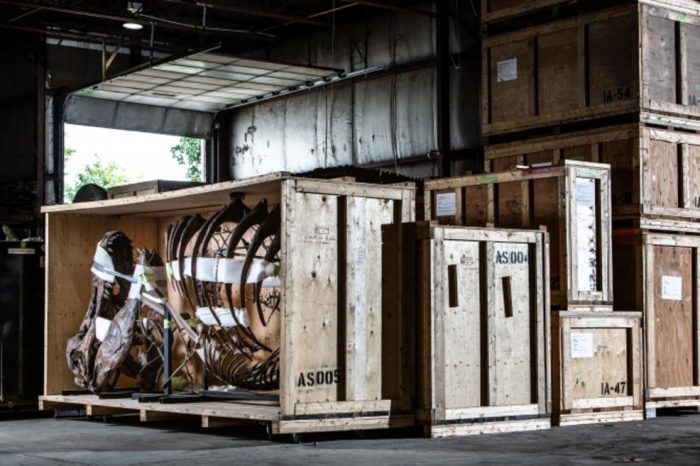
The dinosaur hall at the Smithsonian’s National Museum of Natural History closed in 2014 for a five-year renovation. When the hall closed, some of the fossils were taken to Ontario, Canada, where they were positioned into “dramatic, new and more scientifically accurate poses,” the Smithsonian says. (Photo by Mike Guadaur / Quinta Studios)
After nearly five years, T. Rex is back in the nation’s capital. The Smithsonian’s National Museum of Natural History unveiled the skeleton Tuesday morning. The fossil will be the centerpiece of the museum’s new dinosaur and fossil hall when it opens next year. Read more from Erica Jones for NBC-4.
Your New York Library Card Will Now Allow You Access to 33 City Museums
A new initiative encourages New Yorkers to use their library cards to get in free to museums across the city.
Hyperallergic, July 16

Three New York library system will now offer patrons free access to 33 area museums (graphic by Hrag Vartanian/Hyperallergic)
New York City residents, surrounded by landmark institutions of art and culture, are often left forgotten by the city’s most celebrated institutions in the place they call home — relegated to the sidelines by museums with skyrocketing admission fees. Recent efforts to widen the restrictive boundaries between economic status and cultural access have made great strides with the help of New York City’s public library system and the launch of Culture Pass NYC, a new initiative to grant library card holders free access to 33 participating museums across NYC. The program launched today in conjunction with the Brooklyn Public Library, Queens Library, and New York Public Library. Read more from Jasmine Weber for Hyperallergic.
The forgotten graves of soldiers killed 157 years ago, during the oppressively hot Battle of Blackburn’s Ford
The Washington Post, July 18
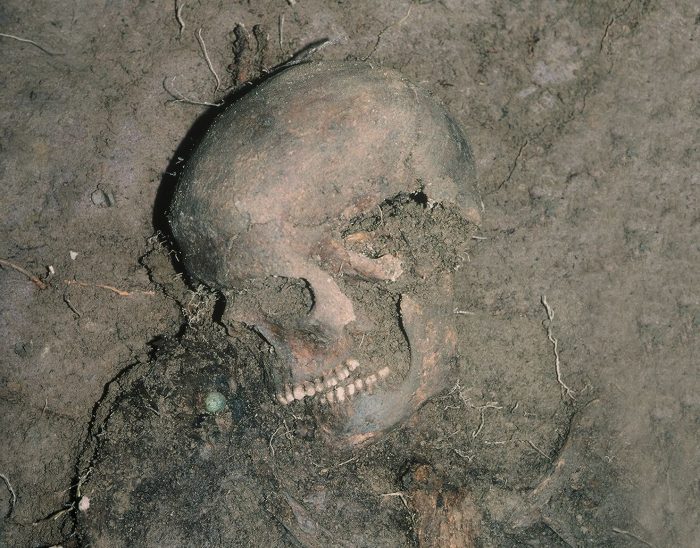
The remains of one of six soldiers from the 1st Massachusetts Regiment found in Centreville, Va., in 1997. The soldiers were believed to have been killed in the Battle of Blackburn’s Ford, which occurred on July 18, 1861. The soldiers were later reburied in the Massachusetts National Cemetery in Bourne, Mass. in 2006. (Fairfax County/Mike Johnson)
On this day 157 years ago, the Battle of Blackburn’s Ford was fought during an extremely hot and humid afternoon. The battle occurred several miles south of Centreville, Va., near where present-day Route 28 crosses Bull Run. There were 83 casualties for the Union and 68 casualties for the Confederacy during the small but fierce battle, which lasted a few hours.
After the battle, some of the Union dead were buried in shallow graves on the south side of Centreville. As the decades passed, the soldiers’ gravesite transformed from a field into a patch of scrubby, pine woods, and the grave markers disappeared. Over time, the graves were forgotten. Read more from Kevin Ambrose for The Washington Post.
Smithsonian’s ‘Watching Oprah’ a powerful reminder of why we miss her
Chicago Tribune, July 22
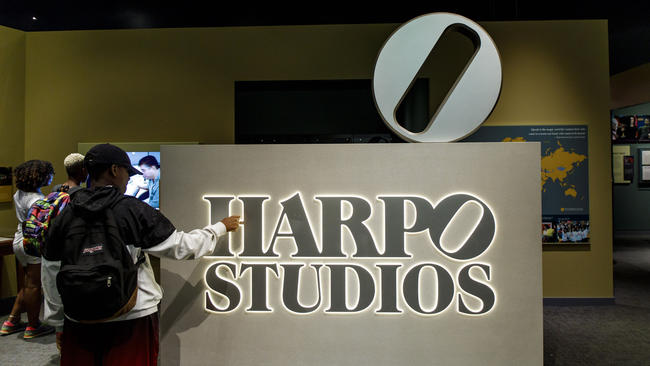
A Harpo Studios sign inside the special exhibit “Watching Oprah: The Oprah Winfrey Show and American Culture” on July 10, 2018, at the National Museum of African American History & Culture. (Brian Cassella / Chicago Tribune)
ll of the greatest hits are reprised in “Watching Oprah,” a new exhibition at the Smithsonian Institution’s National Museum of African American History & Culture.
There’s “Favorite Things.” “Remembering Your Spirit.” The Texas cattlemen’s lawsuit. There are, of course, “You get a car!,” “The Color Purple,” and those early shows that sought to understand Klansmen and the final ones that filled the United Center with adoring fans and A-list celebrities. Read more from Steve Johnson for the Chicago Tribune.
What do Men’s Rights Activists Really Want? The “Live From D.C.” Edition
The Waves on litigious men’s rights activists, Ellen Stofan, and sexist romcoms.
Slate.com, July 19
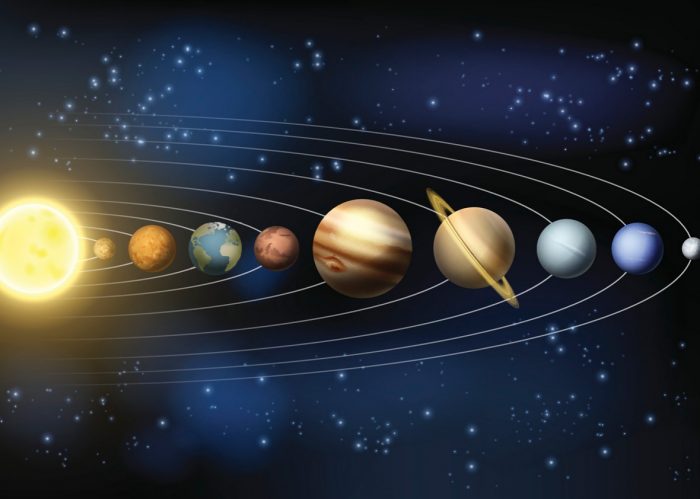
Chris Gorgio / iStock
On this week’s episode of the Waves—recorded in front of an audience at the Hamilton in Washington—Christina, June, and Veralyn discuss a New York Times report on a spate of lawsuits filed by men’s rights activists against the organizers of ladies’ nights and women’s networking events. Then they chat with Ellen Stofan, the director of the Smithsonian National Air and Space Museum and a former chief scientist at NASA, about women in STEM, running the most-visited museum in America, and her favorite planet. Finally, they answer some “Is it sexist?” questions submitted by listeners. Listen to the podcast.
Smithsonian plays catch-up in new space race
Renovating the National Air and Space Museum will require nearly a billion dollars and more than the usual suspects.
Politico, July 20
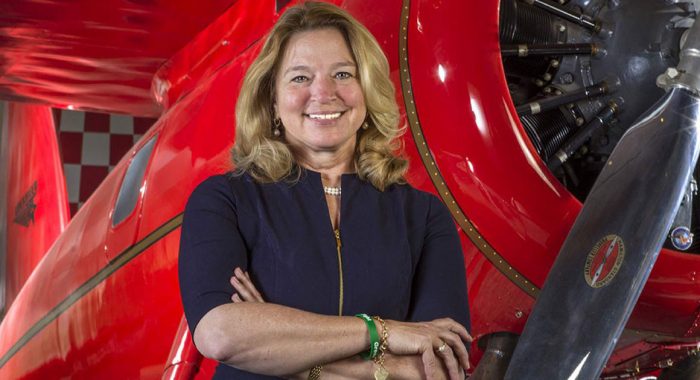
Ellen Stofan took over as museum director of the Smithsonian’s National Air and Space Museum in April after serving as NASA’s chief scientist. | National Air and Space Museum, Smithsonian Institution
The Smithsonian’s National Air and Space Museum is a getting a nearly billion-dollar makeover beginning this summer. And a major thrust will be capturing a new space race no longer driven merely by NASA and other government space agencies.
“We’re obviously going into a different era where you have companies like Blue Origin and SpaceX, where you have these individuals who are so passionate about space exploration and who are willing to put their own dollars on the line,” says Ellen Stofan, who took over as museum director in April after serving as NASA’s chief scientist. Read more from Jacqueline Klimas for Politico.
Smithsonian gallery explores diversity in US lynchings
Associated Press, July 20

Mexican-American artist Ken Gonzales-Day is currently exhibiting his 2006 series “Erased Lynchings” at the Smithsonian’s National Portrait Gallery in Washington, Monday, June 25, 2018, a series of photographs of lynchings in which the victim has been digitally removed from the image. (AP ohoto/Andrew Harnik)
The Smithsonian’s National Portrait Gallery acknowledges that people of color have long been missing in the works it exhibits.
Now the museum is tackling the issue in an unusual way.
The Portrait Gallery is currently showing about 20 works by Los Angeles-based artist Ken Gonzales-Day that examine lynchings, mostly in the American West, and probe the history of racial violence in the United States.
“Latinos were a very small number” of those lynched in the U.S, Gonzales-Day told The Associated Press during a recent interview at the Portrait Gallery. “Native Americans, Chinese, even smaller numbers.” Read more from Luis Alonso Lugo for AP.
Posted: 22 July 2018



